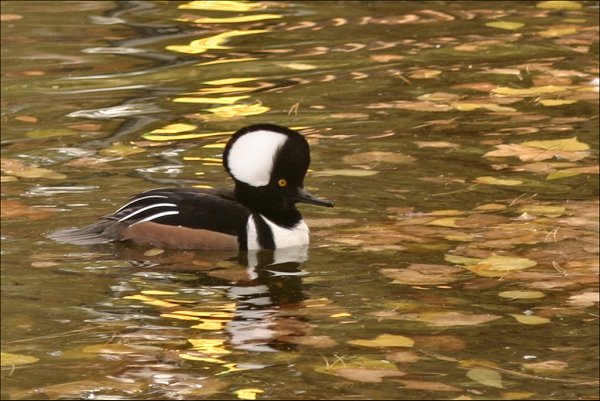
Location: Famosa Slough, San Diego, CA
Date: 2003-11-24
Lens: Canon 28-90mm F4-5.6

 Hooded Merganser
Lophodytes cucullatus
Hooded Merganser
Lophodytes cucullatus
 Description
DescriptionThe smallest of our mergansers, Hoodeds are often seen along rivers and in estuaries during the fall and winter. They are usually found in pairs or in flocks of up to a dozen. The Hooded Merganser is one of the fastest-flying of our ducks. They mainly feed on small fish, which they pursue in long, rapid, underwater dives, but also take small frogs, newts, tadpoles, and aquatic insects.
General: 16 to 19 inches in length.
Male Alternate: Black head and body. Dull rusty flanks. White breast with two black stripes down the side. Large, retractable fan-shaped crest with central white patch. Slender, long, black, pointed bill with serrated edges. Yellow eyes. Dark tail and wings, with white flight patch.
Male Basic: Similar to adult female. Plumage worn from fall through early summer.
Adult Female: Dull gray-brown plumage with paler breast. Warmer brown head and crest. Reddish tinge to retractable fan-shaped crest. White belly. Brown eye. Slender, long, dark, pointed bill with serrated edges. Dark tail and wings, with white flight patch.
Immature: Similar to adult female.
Wooded ponds, lakes and rivers during breeding. Coastal marshes and inlets during winter.
 Nesting
Nesting8-12 white eggs. The eggs have a 28-41 day incubation period. Fledging occurs in 71 days. The nest is a down lined cup built in a natural tree cavity or fallen hollow log.